Design & Research
Spatial Design
Design & Research
Courses - Electives Industrial Design
Graphic Design
Prototyping
Transition from Architecture to Industrial Design was challenging but fun. Coming from a department with a very different mindset, working only towards final deadlines, without structured design methods or stakeholder involvement.
After a diverse curriculum, I completed my Integrated Master’s in Architecture Engineering, focusing on spatial and urban design, working on both small- and large-scale projects. This helped me develop strong design and organization skills and work effectively as both collaborator and leader. During my studies, I was always curious about how products and services shape everyday experiences. This curiosity, combined with a desire for a user-centered and business-oriented design approach, led me to Industrial Design.
At TU/e, my goal was to gain a better understanding of User & Society and Business & Entrepreneurship, combining theory with practice. I actively followed user-centered approaches, involved stakeholders, explored business models, and applied feasibility thinking, recognizing the importance of experimentation and analysis, skills I believe every designer should have.

Courses - Electives
User & Society
(U&S)
(DDM150)
User Experience Theory and Practice
(DDM110)
Design for Behavioural Change
Business & Entrepreneurship
(B&E)
(DAM180)
Design Entrepreneurship
(DCM130)
Design for Social Innovation
(DAM170)
Values Based Leadership in Business Innovation
Creativity & Aesthetics
(C&A)
(DDM150)
User Experience Theory and Practice
(DCM160)
Interactive Materiality
Math, Data & Computing
(M,D&C)
(DBB100)
Creative Programming
Technology & Realization
(T&R)
(DBB100)
Creative Programming
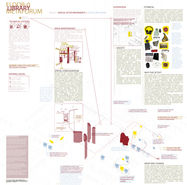
User and Society
The courses “Design for Behavioural Change” and “User Experience Theory and Practice” gave me a solid foundation in UX theory and case-based practice, helping me understand how stakeholders experience and adopt products and systems. In M1.1, we followed an iterative process where user and technology shaped each other through cycles of making and testing, with regular user involvement guiding the concept to address privacy and diverse needs. We developed a home IoT system that adapted to users’ emotions and controlled appliances and lighting, shifting my view of everyday objects from form to experience. Later, in “Design for Social Innovation”, we worked with Vestide, to tackle future student housing challenges, while pushing us to design with long-term impact in mind. We used UX tools such as, ethnography and infographic visualisations to communicate user needs, methods later applied in my Design Research and FMP. Since then, I became invested in UX and continued with courses on social innovation, exploring theories and practices for broader societal change.
Technology and Realisation
In all projects, I was involved in the design and execution of physical prototypes. In M1.1, I created the 3D model and tokens in Rhino and prototyping them physically, bringing in my architectural background. Prototyping during Interactive Materiality was intriguing, as working on a smaller scale than I was used to, required attention on affordances, materiality and user experience in new ways [1].
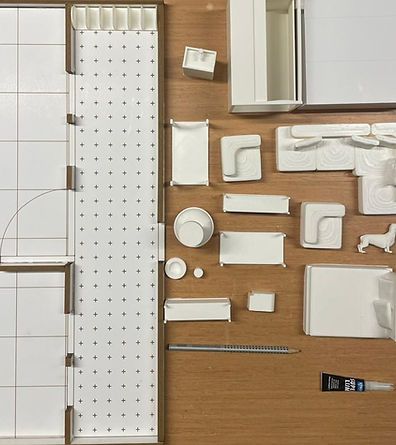


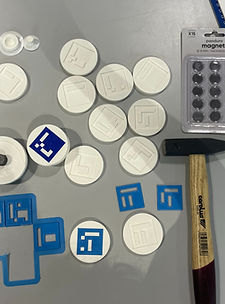
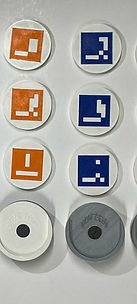
Math, Data & Computing
In M1.1, I combined my architectural mindset with Industrial Design to collectively develop a concept of smart environments supporting user experience by addressing emotional feedback and personal needs. It was my first contact with embedded smart systems on tangible interaction, where I saw the potential of technology and wanted to learn more. With no hands-on experience in electronics or coding, I took the “Creative Programming” bachelor course to learn the basics. In this course, we used Processing to create a static image and an interactive game, enhancing engagement by connecting electronics for physical interaction.


Business and Entrepreneurship
One of the reasons I chose this master was its strong focus on business. I started with “Business and Entrepreneurship,” where I learned the fundamentals of feasibility, value creation and evaluating real-world potential through the startup project Lloep. These were matters that I was highly interested in but had no prior experience. This involvement shifted my thinking from “what looks good” to “what works”, seeing design not just as a product but as a long-term business, with competitors and distinct stakeholders involved. In “Values-Based Leadership,” I explored leading and organizing techniques through frameworks like Agile and design sprints [2]. It helped me reflect on transparency, inclusivity and how leadership shapes both process and outcome.
Creativity and Aesthetics
I usually work with minimal structures and repetition, reflecting the design language of the context. In all three exhibitions, M1.1, Design Research and Interactive Materiality, I focus on creating visually engaging designs with vibrant colours and hands-on experiences, to communicate ideas and attract visitors' attention. I explored materials, prototyping, affordances and experience design, by mapping form, function and interaction [3], a new way of thinking, later applied in my FMP. I also practiced videomaking, editing and clear documentation, with each project reflecting a glimpse of my personal aesthetic.

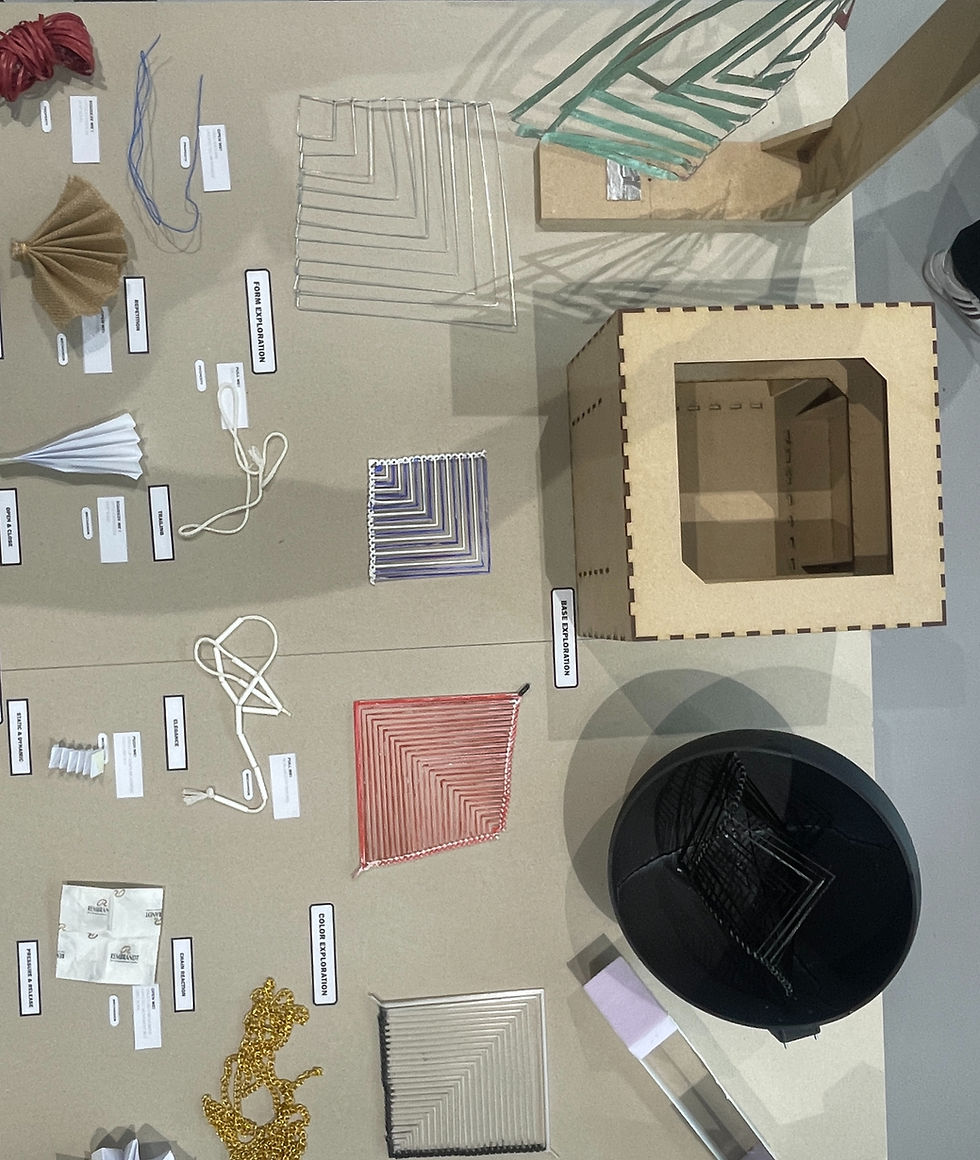
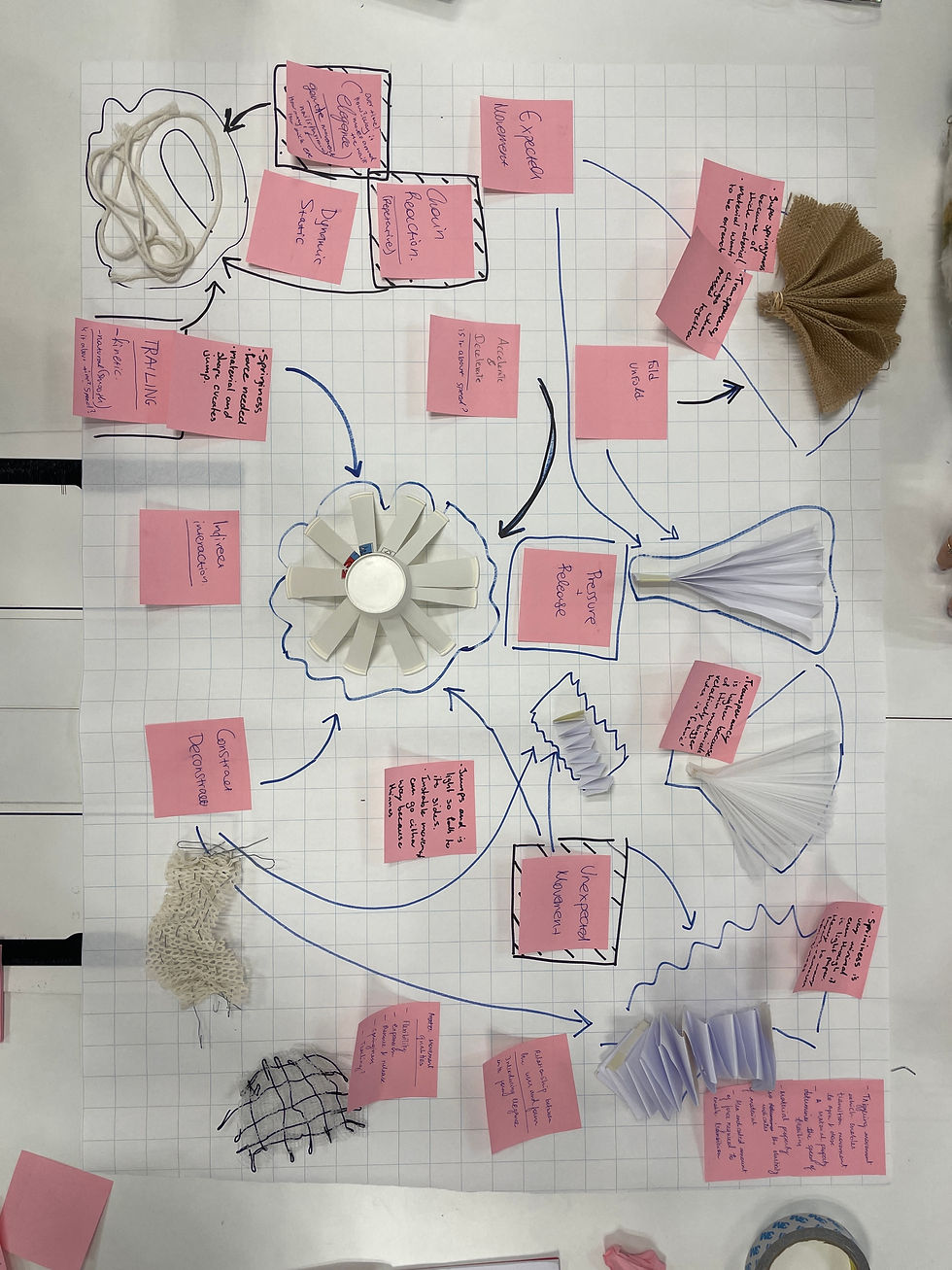




Skills
Holistic Approach
I started approaching challenges from both a business and user perspective, something missing in my previous studies. UX and entrepreneurship courses helped me build a more humanistic approach, observing behaviour and using expert feedback to guide my process.
Brainstorming
Working with multidisciplinary teams strengthened my brainstorming techniques. I learned to ask not just what I want to design, but what would make users’ lives better, easier, and more desirable, leaving space for “crazy” creative ideas.
Presentation
Throughout this master’s, I prepared and delivered multiple presentations in formal English-speaking settings. Although it was new and challenging, presenting to professional audiences helped me build confidence and communicate ideas more clearly and professionally.
Reflection
During this master’s, I learned to build tangible interactive products and was introduced to concepts like IoT and UX, along with a structured way of working. As we move toward hybrid relationships between tangible interfaces and smart technologies, I see potential in blending then, when used ethically and intentionally. Even without a strongly technical background, my practical mindset helped me grow through technical courses and use this master’s to experiment and spark creative thinking. Not all groupwork ran smoothly. Conflicting personalities and opinions sometimes caused miscommunication or inefficiency. In those cases, I took responsibility by organizing meetings, dividing tasks, and contributing to the design development. Overall, I wanted to move beyond designing spaces that simply looked good or functioned well, I wanted to design for people’s behaviours and experiences. Working hands-on and involving stakeholders reshaped my thinking, helping me connect design with strategy and recognize the value of user-centered, feasible solutions. These experiences strengthened my identity as a designer who values empathy, simplicity, and social relevance.
References
[1] R. Hartson, ‘Cognitive, physical, sensory, and functional affordances in interaction design’, Behav. Inf. Technol., vol. 22, no. 5, pp. 315–338, 2003.
[2] K. Wangsa, R. Chugh, S. Karim, and R. Sandu, ‘A comparative study between design thinking, agile, and design sprint methodologies’, Int. J. Agile Syst. Manag., vol. 15, no. 2, pp. 225–242, 2022.
[3] M. Bruns, S. Ossevoort, and M. G. Petersen, ‘Expressivity in Interaction: a Framework for Design’, in Proceedings of the 2021 CHI Conference on Human Factors in Computing Systems, in CHI ’21. New York, NY, USA: Association for Computing Machinery, 2021. doi: 10.1145/3411764.3445231.












